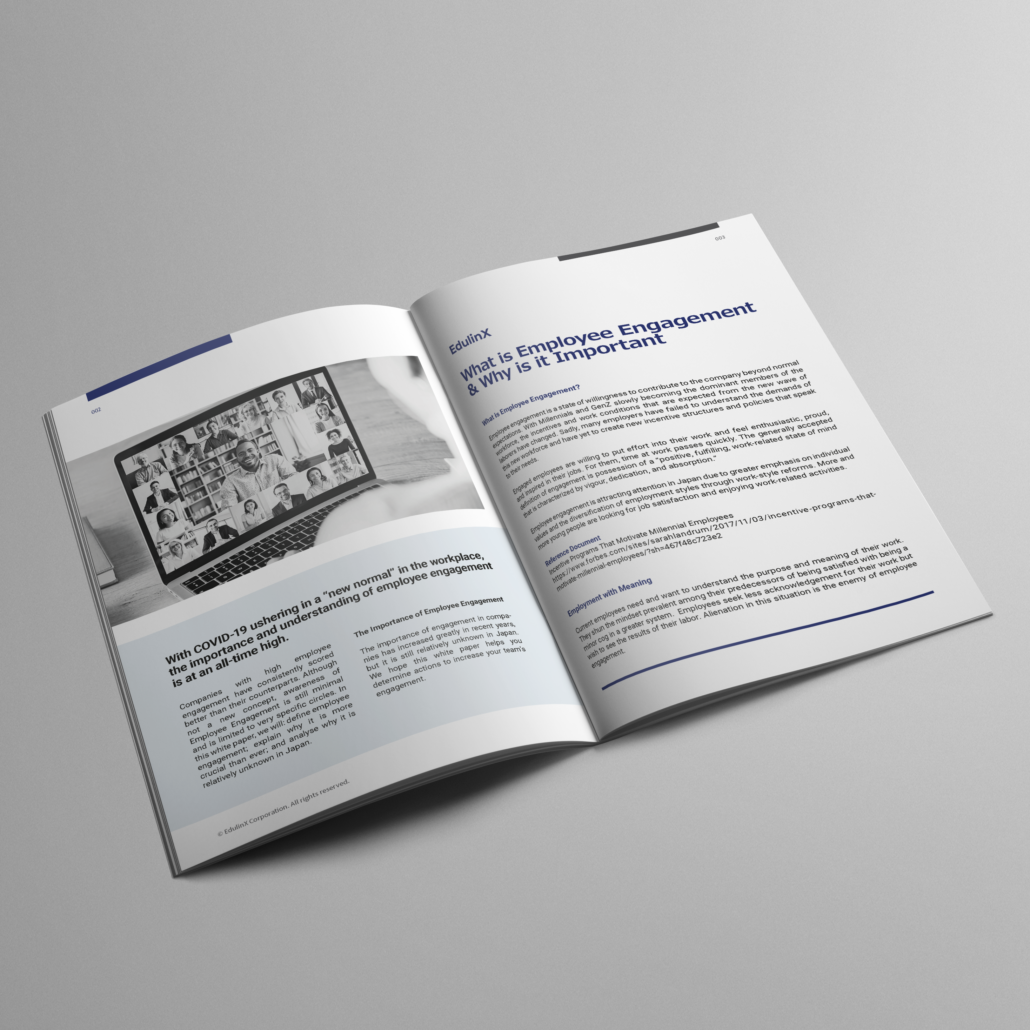With COVID-19 ushering in a “new normal” in the workplace, the importance and understanding of employee engagement is at an all-time high.
Companies with high employee engagement have consistently scored better than their counterparts.
Although not a new concept, awareness of Employee Engagement is still minimal and is limited to very specific circles. In this white paper, we will: define employee engagement; explain why it is more crucial than ever; and analyse why it is relatively unknown in Japan.
The importance of engagement in companies has increased greatly in recent years, but it is still relatively unknown in Japan. We hope this article helps you determine actions to increase your team’s engagement.
What is Employee Engagement?
Employee engagement is a state of willingness to contribute to the company beyond normal expectations. With Millennials and GenZ slowly becoming the dominant members of the workforce, the incentives and work conditions that are expected from the new wave of laborers have changed. Sadly, many employers have failed to understand the demands of this new workforce and have yet to create new incentive structures and policies that speak to their needs.
Engaged employees are willing to put effort into their work and feel enthusiastic, proud, and inspired in their jobs. For them, time at work passes quickly. The generally accepted definition of engagement is possession of a “positive, fulfilling, work-related state of mind that is characterized by vigour, dedication, and absorption.”
Employee engagement is attracting attention in Japan due to greater emphasis on individual values and the diversification of employment styles through work-style reforms. More and more young people are looking for job satisfaction and enjoying work-related activities.
[Reference] “Incentive Programs That Motivate Millennial Employees”

Employment with Meaning
Current employees need and want to understand the purpose and meaning of their work.
They shun the mindset prevalent among their predecessors of being satisfied with being a minor cog in a greater system. Employees seek less acknowledgement for their work but wish to see the results of their labor. Alienation in this situation is the enemy of employee engagement.
Alienation is the result of company leaders’ lack of transparency and a misunderstanding and/or lack of shared values, strategic direction, and the reasoning of the leaders and their employments.
To avoid alienation, one need to be self-aware, inspiring, and providing the right culture that allows empathy to naturally flourish in the organization. Employees do not need to emulate their leaders, but they need to align their values to some level with the organization.
Thus, a leader’s role is to make sure that the motivation of the employees and the organization is aligned. A simple tool in aiding this alignment is engagement surveys, which can be used to sense the pulse of the organization and format the goals and priorities listen in them the organization’s greater vision.
Employee Engagement in Japan
According to Gallup, only 15% of employees worldwide are engaged at work. In Japan, the figure is slightly better, with 35% of employees engaged. This score may be influenced by the tendency of people to choose intermediate answers. Still, many employees may not fully sympathize with the company‘s policies and strategies and may do mostly what they are told.
Benefits of Employee Engagement
Over the past decade…
WHAT IS EMPLOYEE ENGAGEMENT & WHY IS IT IMPORTANT
This white paper uncovers the specific things that organizations need to do to effectively engage their workforce.



